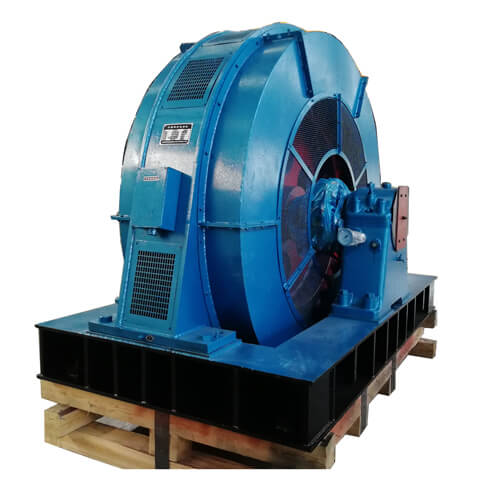An electric motor is a machine that converts electrical energy into mechanical energy to perform mechanical operations. There are two types of AC motors; synchronous motors and asynchronous motors. They both have some similarities, but are very different in operation and performance.
A DC motor works by a magnetic field acting on a current-carrying conductor that is subjected to mechanical forces. In the case of AC motors, the concept of rotating magnetic field RMF is utilized. The stator consists of a number of windings that generate a varying magnetic field when supplied with an input AC current. This magnetic field rotates around the rotor.
The relative difference between the stator rotating field and the rotor speed is called slip. If the motor has zero slip or if the rotor speed is the same as the stator rotating magnetic field, the motor is called an AC synchronous motor. If the AC motor has a slip or if there is a difference between the speed of the stator field and the rotor, the motor is called an asynchronous motor.
As the name implies, a synchronous motor has a rotor that is designed to rotate at the same speed as its stator's rotating magnetic field, called synchronous speed.
The stator produces the rotating magnetic field when supplied with AC power. The rotor can be designed to generate its own magnetic field using an external DC power supply through slip rings or using permanent magnets.
The rotor is designed to produce magnetic poles equal to or an integer multiple of the stator poles. When the stator and rotor are energized, the rotor magnetic field is locked to the stator rotating field and rotates at the exact speed of the stator field.
The rotor of a synchronous motor rotates at a synchronous speed that depends on the frequency of the power supply and the number of poles of the stator winding. Therefore, the motor speed does not vary with the load. In order to change the speed of a synchronous motor, the supply frequency must be changed.

The name of the asynchronous motor implies that the rotor speed is not synchronized with the rotation speed of the stator field. To be precise, the rotor of an asynchronous motor rotates at a relatively lower speed than the stator RMF. This is due to the slip between its stator and rotor speeds.
The rotor of an asynchronous motor is either a wire-wound rotor with a squirrel cage. A squirrel-cage rotor consists of heavy copper bars connected at the end, which are electrically shorted together using conductive rings. A wire-wound rotor is made of multiple windings on top of a steel laminated iron core.
The stator rotating magnetic field induces an induced current in the rotor. This induced current flows inside the rotor and generates its own magnetic field. Because it works on the principle of induction, an asynchronous motor is also called an induction motor. Induction motors can never run at synchronous speed, but always slower than synchronous speed, depending on the motor's slew rate.
The conclusion is that synchronous motors are more efficient but more costly and are used for ultra-low speed applications while providing power factor correction. On the other hand, induction motors are used for high speed applications with variable speed, while being inexpensive and easy to operate. Now you can contact us to find more motors, we have permanent magnet synchronous motor, low voltage squirrel cage motors and so on.
Copyright © ZCL Electric Motor Technology Co., Ltd. All Rights Reserved | Sitemap | Powered by 